
|
 |
|
 |
 |
 |
|
FarmAnimals
|
|

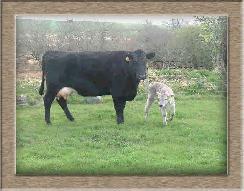

|
A week old calf with a black cow. You will notice that the calves on the farm are not always the same colour as their mother. This partly depends on what type and colour the father (the bull)is. This calf was bred on the farm from Farmer Bob's bull. Cows are kept on the farm for their meat and milk, their skin is also turned into leather for shoes, clothes and handbags.
|
|
 |
 |
 |
|
 |
 |
|
 |
 |
 |
|
FarmAnimals
|
| Black sheep are amongst the favourites within the farm. They are cute and cuddly. These lambs are a few weeks old and spend their time out in the field with their mothers.
|

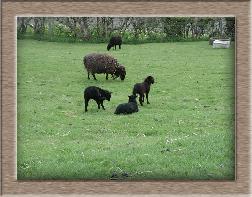

|
|
 |
 |
 |
|
 |
 |
|
 |
 |
 |
|
FarmAnimals
|
|

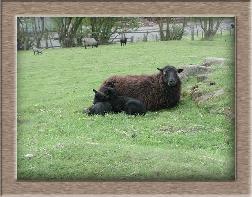

|
They are not very common on the farm, part of the reason may be that the wool is very dark and difficult to dye with all of the bright colours we use today.
|
|
 |
 |
 |
|
 |
 |
|
 |
 |
 |
|
FarmAnimals
|
| Three cute black lambs sunning themselves out in the field. Lambs at this stage are just beginning to eat some grass but still like to take mothers milk.
|

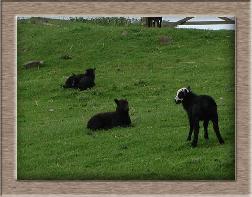

|
|
 |
 |
 |
|
 |
 |
|
 |
 |
 |
|
FarmAnimals
|
|

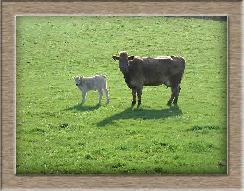

|
A brown cow with a calf. A cow can easily produce a gallon of milk a day. The milk all goes to the calf when it is young and the farmer then starts milking the cow when the calf has grown up a bit.
|
|
 |
 |
 |
|
 |
 |
|
 |
 |
 |
|
FarmAnimals
|
| The bull is an important addition to any farm. He fathers all of the calves in the herd. The farmer keeps the bull in top condition by feeding him on the best of feed.
|

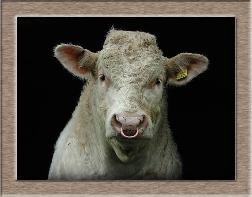

|
|
 |
 |
 |
|
 |
 |
|
 |
 |
 |
|
FarmAnimals
|
|

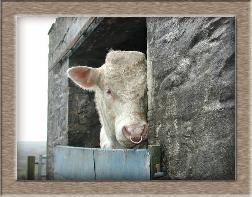

|
This bull is playing hide and seek. He is very friendly but some are not and may chase people across fields. Bulls are colour blind, that is they cannot see colours. This one is kept in his own shed when the weather is bad.
|
|
 |
 |
 |
|
 |
 |
|
 |
 |
 |
|
FarmAnimals
|
| They generally have a ring through their nose which is very sensitive. Farmer Bob uses the ring to lead the bull around when he is being moved within the farm. Bulls are very powerful animals and can easily crush a gate to a field if they choose to do so.
|

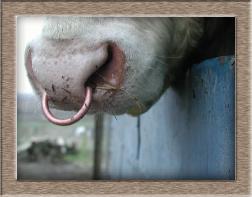

|
|
 |
 |
 |
|
 |
 |
|
 |
 |
 |
|
FarmAnimals
|
|

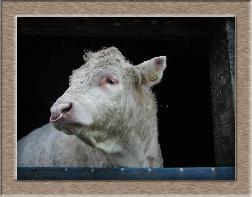

|
Do you think this is my best side, Farmer Bob says I am going to be seen all around the world and I want to look my best.
|
|
 |
 |
 |
|
 |
 |
|
 |
 |
 |
|
FarmAnimals
|
| Two young calves in the corner of the byre. Farmer Bob keeps them inside for a few days as the weather can get bad at this time of year.
|

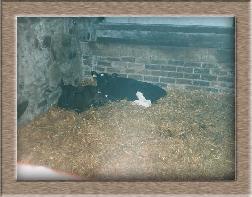

|
|
 |
 |
 |
|
 |
 |
|
 |
 |
 |
|
FarmAnimals
|
|

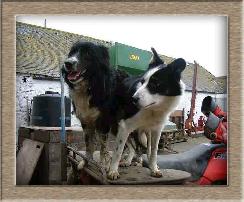

|
Dogs are very important on the farm, especially LochDhu the AdoptaFarm, where they are used to herd the sheep. Move over darling, can't you see it is me that they are trying to photograph.
|
|
 |
 |
 |
|
 |
 |
|
 |
 |
 |
|
FarmAnimals
|
| You would think he was trying to escape but he is outside looking in. Farmer Bob makes the dogs stay out of the byre as the sheep might take fright.
|

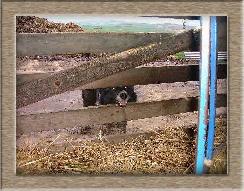

|
|
 |
 |
 |
|
 |
 |
|
 |
 |
 |
|
FarmAnimals
|
|

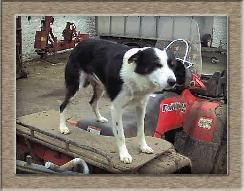

|
The sheepdog spends a lot of time standing on the rear seat of the bike but normally when it is being driven along! He loves the wind in his face and he can see what the sheep are getting up to from his high perch.
|
|
 |
 |
 |
|
 |
 |
|
 |
 |
 |
|
FarmAnimals
|
| Ducks are kept on the farm for their eggs and meat. Duck eggs are eaten less often than chickens eggs these days.
|

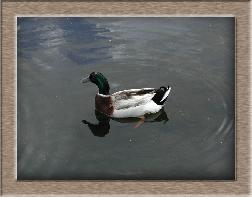

|
|
 |
 |
 |
|
 |
 |
|
 |
 |
 |
|
FarmAnimals
|
|

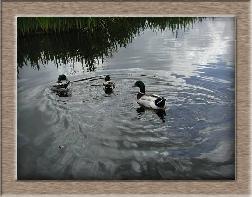

|
These are wild ducks which visit the Adoptafarm pond every year. They seem to migrate in to the same place year after year.
|
|
 |
 |
 |
|
 |
 |
|
 |
 |
 |
|
FarmAnimals
|
| They are social creatures generally living in the same place as a number of other ducks.
|

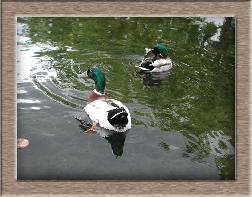

|
|
 |
 |
 |
|
 |
 |
|
 |
 |
 |
|
FarmAnimals
|
|

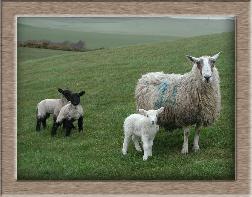

|
There are huge numbers of sheep on farms. They are bred for their wool and meat and some farmers also sell sheeps milk. These three lambs and their mum are out in the fields, the lambs are only days old.
|
|
 |
 |
 |
|
 |
 |
|
 |
 |
 |
|
FarmAnimals
|
| Lambs are born in the spring time when the weather begins to turn warmer. This ewe has had three lambs. More commonly each ewe has two but four or five are not uncommon.
|

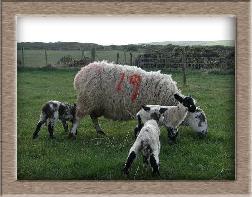

|
|
 |
 |
 |
|
 |
 |
|
 |
 |
 |
|
FarmAnimals
|
|

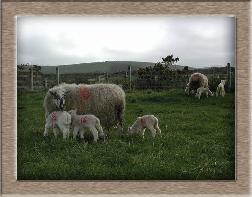

|
Farmer Bob keeps the ewes with three lambs in a special field which he checks regularly to ensure that the mums have not misplaced one of their lambs.
|
|
 |
 |
 |
|
 |
 |
|
 |
 |
 |
|
FarmAnimals
|
| Goats come in a variety of sizes and are kept by a number of farmers who may either sell their milk or their fleece. Angorra wool is much sought after to create jumpers and scarves etc.
|

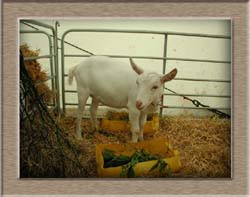

|
|
 |
 |
 |
|
 |
 |
|
 |
 |
 |
|
FarmAnimals
|
|

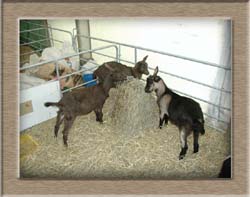

|
Goats are found wild throughout the world particularly in mountaineous regions. The live among the rocky outcrops and have to be very sure footed as they clamber across the rocky terrain. They will try to eat almost anything!
|
|
 |
 |
 |
|
 |
 |
|
 |
 |
 |
|
FarmAnimals
|
| Geese are normally larger than ducks and produce larger eggs. Some geese are kept as guard geese as they make a lot of noise when they spot an intruder. Notice the webbed feet of the nearest goose, this helps them to glide almost effortlessly through the water.
|

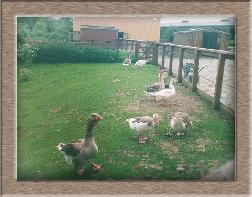

|
|
 |
 |
 |
|
 |
 |
|
 |
 |
 |
|
FarmAnimals
|
|

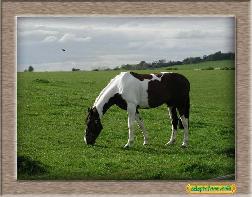

|
Horses at one time were used extensively on the farm before the adoption of machinery such as the tractor. They did all the things that are done by the tractor now. The power of machinery is still measured in horse power. The AdoptaFarm tractor is over 100 horse power.
|
|
 |
 |
 |
|
 |
 |
|
 |
 |
 |
|
FarmAnimals
|
| Nowadays they are mostly used for recreation and spend most of their time enjoying themselves out in the field grazing.
|

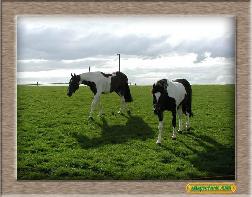

|
|
 |
 |
 |
|
 |
 |
|
 |
 |
 |
|
FarmAnimals
|
|

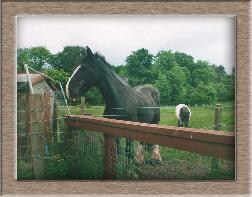

|
This is a heavy horse used for the ploughing and pulling carts on the farm. These days his place has been taken by the tractor.
|
|
 |
 |
 |
|
 |
 |
|
 |
 |
 |
|
FarmAnimals
|
|

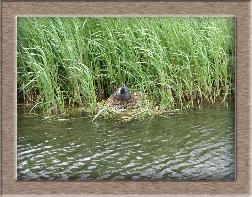

|
The Moorhen is a wild wading bird found on the pond. Their colour is predominantly black. Their feet are partly webbed to help them paddle around the pond easily.
|
|
 |
 |
 |
|
 |
 |
|
 |
 |
 |
|
FarmAnimals
|
| They make their nests at the edge of the water by building a raft and continually adding more nesting materials until they have a stable platform into which they can lay their eggs.
|

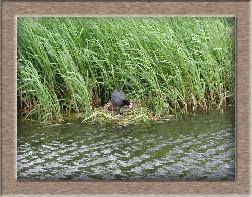

|
|
 |
 |
 |
|
 |
 |
|
 |
 |
 |
|
FarmAnimals
|
|

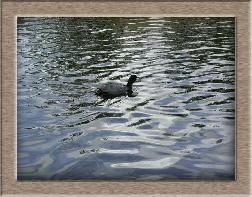

|
This Moorhen is on the look out for some food. They are constantly swimming about around the pond looking for food.
|
|
 |
 |
 |
|
 |
 |
|
 |
 |
 |
|
FarmAnimals
|
| A mother and baby Moorhen. The mother keeps her young close to her to fend off any predators.
|

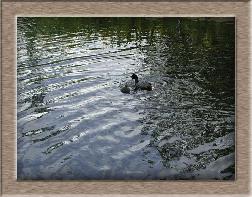

|
|
 |
 |
 |
|
 |
 |
|
 |
 |
 |
|
FarmAnimals
|
|

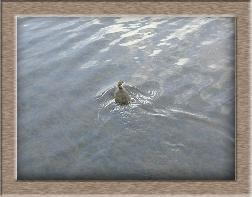

|
A baby Moorhen out on it's own. Oops it spotted me and is making a hasty retreat back to mum.
|
|
 |
 |
 |
|
 |
 |
|
 |
 |
 |
|
FarmAnimals
|
| Pigs at one time were kept by most farmers as a source of meat. We get bacon from pigs. Nowadays pigs are less popular on farms in Scotland.
|

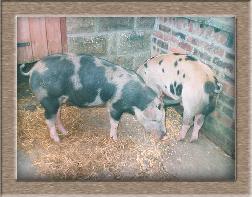

|
|
 |
 |
 |
|
 |
 |
|
 |
 |
 |
|
FarmAnimals
|
|

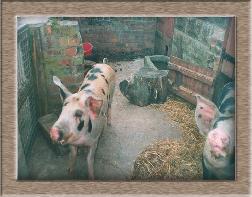

|
Pigs were at one time widely kept on every farm. Nowadays pigs are generally only found at a few where they are intensively farmed.
|
|
 |
 |
 |
|
 |
 |
|
 |
 |
 |
|
FarmAnimals
|
| This year a pair of swans came to the pond. They are a breeding pair. The female swan is sitting on the nest just inside the reeds. The male is on the look out for any predators which he will chase away.
|

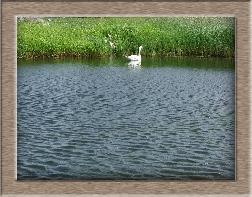

|
|
 |
 |
 |
|
 |
 |
|
 |
 |
 |
|
FarmAnimals
|
|

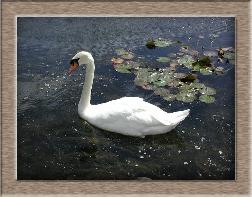

|
The swan is very powerful and elegant. He glides through the water effortlessly. Adult swans have a wingspan of over six feet
|
|
 |
 |
 |
|
 |
 |
|
 |
 |
 |
|
FarmAnimals
|
| A few weeks after the swans arrive the eggs have hatched and the young swans which are called cygnets are born. They grow quickly. If you click the photograph and look closely you will see that the cygnets is covered in soft downy feathers which are replaced by stronger feathers as it gets older. At this stage the cygnet cannot fly.
|

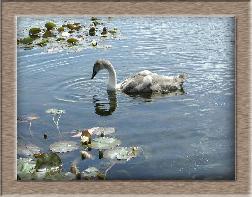

|
|
 |
 |
 |
|
 |
 |
|
 |
 |
 |
|
FarmAnimals
|
|

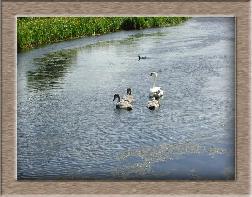

|
Mum regularly takes them out into the pond giving them exercise and teaching them about life.
|
|
 |
 |
 |
|
 |
 |
|
 |
 |
 |
|
FarmAnimals
|
| The cygnets eventually get brave and move around on their own venturing further and further away from the nest as time goes by.
|

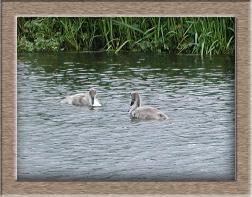

|
|
 |
 |
 |
|
 |
 |
|
 |
 |
 |
|
FarmAnimals
|
|

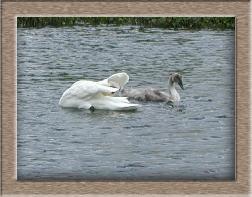

|
At this stage mum is never far away from the cygnets, they still have a lot to learn about life and may get into difficulty. Here she is preening herself while watching over the cygnets.
|
|
 |
 |
 |
|
 |
 |
|
 |
 |
 |
|
FarmAnimals
|
| When the swans are away from the nest on the pond, the ducks and moorhens take the opportunity to sun themselves in the swans nest.
|

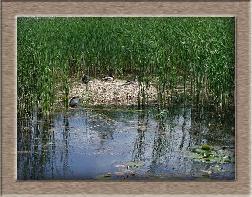

|
|
 |
 |
 |
|
 |
 |
|
 |
 |
 |
|
FarmAnimals
|
|

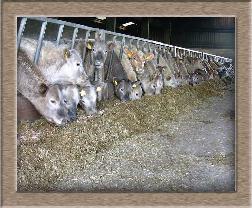

|
With all the cows wintered outside on Lochdhu, the calves come in for the winter. They are fed silage, but get some home produced barley sprinkled on top just to balance their ration for a growing calf. Unlike the cows and ewes that have to be kept on a special diet to make sure they are just right when they lamb or calf, these calves are fed as much as they want. Each of them eating about 3Kg of barley and 25Kg of silage each day.
|
|
 |
 |
 |
|
 |
|
 
|